|
by Willow Enright When I first dreamt of working with leather I was overwhelmed by the vast amount of choices. Where should I buy the leather? How will I know if it is the right thickness? Can’t I just re-use something I already have? Is there such a thing as that perfect leather hide? I admit that this dilemma is inevitable if you plan to work with leather. I’ll also admit that most leather workers have their own opinions about which is best. My answer is, do what works for you. There are a few choices when it comes to where you might find quality leather. In store leather suppliers are a great place to find good hides, another is online stores, and even thrift shops can be useful. Unfortunately leather stores aren’t readily available, and most folks won’t have the opportunity to go into a store in person. However, if you are lucky enough to live near one, go! I live in Seattle, so I have two available choices, Tandy Leather and Mac Pherson’s Leather Co. The best way to figure out which leather you need is to go in person to see, touch, and experience it for yourself. There’s nothing quite like fondling leather. Out of the two stores, I prefer Tandy Leather. They have everything clearly labeled with their three tier prices, regular, gold, and elite. If you don’t have a business license and haven’t purchased a membership, then you’ll be a regular priced buyer. This is nice because you don’t have to guess, wonder, or ask about the prices for most things. Sometimes you still have to ask about the leather hides, depending on the store layout. I find them to be slightly less expensive than Mac Pherson’s, and also have various specials going on fairly regularly, which are valid both in store and online. When using the internet option to buy leather my choice location is eBay. I really like the option of watching lots of various pieces of leather hides and seeing how they are priced. It really gives you a feel for how much you are going to get for the price you are spending. Be sure to look for the leather hide’s actual size measurements in inches or centimeters, and not square feet. (Unless you are familiar with buying fabric this way.) Sometimes they will use a 12”x 12” tile on the floor and lay the leather down over them for reference, or simply use a tape measure. My favorite leather seller on eBay is theleatherguyofmn. He has really nice hides that are well priced, and his shipping isn’t out of control. I’ve purchased numerous hides from his Minnesota based store, and have never had a problem with the condition of the leather or how it arrives. There are times when your budget is super limited but you still want to rock some unique leathers. This is when you get extra creative and dig through your closet or hit up a thrift store. You can find all sorts of clothing made out of some form of leather-ish material. Try to find items labeled: Genuine leather (usually has a suede side or feeling to it,) Real Leather, Top/Full grain leather, Made with animal products. These are more likely to be real leather. You can rip up suede skirts, alter leather gloves or boots, and repurpose leather belts. Knowing and understanding the different thicknesses of leather is important. You can buy leather from a 1oz - 16oz thickness. The smaller the ounce number the thinner the material will be, and subsequently the larger the number the thicker it will be. If you are making a fitted leather vest you’ll likely want something in the 1-3oz range, and if you are looking for SCA approved armor then you’ll want 12-16oz leather. If you are doing belts, holsters, or LARP armor then a 7-9oz works well, and for bags and purses using a 4-5oz is nice. Everyone wants to find that unblemished, perfectly-colored leather in the exact thickness that will work for your project. You want it to magically show itself to you for next to nothing in cost. It’s good to dream, and sometimes they do come true. I’m more of a “My mistress, when she walks, treads on the ground” kind of person. (William Shakespeare Sonnet 130) I’m fond of the imperfections and scars that show up in leather hides because they were the skins of an animal, and they don’t have perfect skin. Every piece of leather offers up a different texture, and in my opinion the blemishes just add character to your finished project. I try to keep these in mind when looking for my leather, because sometimes you see the perfect project based on the leather’s uniqueness.
So now that we’ve touched on where you should buy leather, and how to know the right thickness, and that a perfect leather hide often has flaws you can use. You can check your closet for something you already have to rip up, or go Macklemore style “I’m gonna pop some tags, Only got twenty dollars in my pocket. I'm hunting, looking for a come-up,” or you can venture out and begin from scratch. You’ve just learned the basics on where to start, and now all you need is the vision. Happy hunting!
2 Comments
by Willow Enright I love to cosplay as much as the next nerd, and not just cosplay but use copious amounts of leather in my cosplay. I understand that some might have concerns about using leather, and if you do please read the previous blog, Cosplayers Concerns Over Using Leather. Now that we’ve covered that, let’s talk about how to incorporate leather into what you are already doing, or hope to be doing. Keep in mind everyone has a different way of creating each costume, but if you’ve never put together a cosplay, this guide should be helpful for you. Always start your costume with a mock-up, create one piece at a time, and budget your time wisely. Most importantly, have fun! After all, that’s why we want to cosplay in the first place!
figure out if all of them need to be cut from the same hide, or multiple hides. You’ll want to think about which ones will be simple and easy to create and which ones will take, FOREVER. You’ll also need to think about which ones are essential to identifying your character, and prioritize properly.
Now that you have made a mock-up, prioritized your items, and outlined your schedule, you have a much better idea of what supplies you might need. You can now head to the store, online or otherwise, and choose which items will work for you. Only when you get to perusing you realize you don’t know whether you should get veg tan, oil, tan, and what the heck is chrome tan? When choosing leather, there are three main processes to consider, besides which animal it’s made out of, vegetable tanned (veg tan), oil tanned, and chrome tanned. If you can find the color, thickness, and overall feel from oil tan leather that fits what you’re looking for, get it. If you are thinking about a chrome tanned hide, you should know that chrome tan is an unnatural chemical process that creates the final color that you see. Vegetable tanned leather is an unfinished and undyed hide that’s been treated with ingredients found in different vegetable matter, such as tree bark prepared in bark mills, wood, leaves, fruits, and roots. If you are having a tough time finding that one piece that works for you, consider veg tan. The vegetable tanned is better for the environment and you can really individualize the piece you are working on, by shaping, tooling, and coloring. The downside of vegetable tanned leather is that you need more supplies such as leather dye and a leather conditioner, or acrylic leather paint and resolene finishing, to help protect it and keep your item looking sharp. However, you can wet form vegetable tanned leather to get specific shapes, whereas the chrome tanned and oil tanned leather you cannot shape in the same way.
Whatever material you end up using for your cosplay, just be sure to enjoy what you are doing! by Willow Enright Part IV: Arrived at WestlandLet’s recap on my journey to become a Mord-Sith. I had created the whole outfit, from commissioning a catsuit, creating armor from cowhide, and modifying a pair of nubuck leather boots. In true Mord-Sith fashion, I decided that I clearly hadn’t worked hard enough and I set out to create a more worthy specimen. See Part I, Part II, and Part III for more details. What I had gathered from my first attempt was a set of amazing historical replica buckles, a reusable pattern, my customized leather catsuit, the maroon leather gloves, my handmade Agiel, and my now blood-red Merrell Tetra boots, and my belt. In the meantime I had purchased some antiqued brass rivets, as well as antiqued brass snaps, a swivel knife, and shoe lace hooks. But the best thing of all, was an amazing mallet, all thanks to Jon. Once I had that beautiful rawhide mallet in my hot little hands I started practicing my tooling. I used a scrap piece of leather to test out the different tools (six piece basic craftsman set, and my good ol’ screwdrivers) I learned through the tutorial videos that you should wet your leather slightly before doing any of the tooling work. It should be damp, but not soaked, and you should wait until the leather has almost returned to it’s natural lighter color. And you need to keep re-wetting the leather as you go and it dries out. For my neck gorget, I chose a flower design to tool, it would represent the D’Haran flower used to dye the Sister of the Agiel’s armor. Then I traced the flower pattern onto a piece of paper and used the old fashioned tracing transfer method of rubbing the backside of the paper to leave the design on the leather. Using my new swivel knife I carved the design, and then erased the left over pencil marks. Then I used the rawhide mallet and six piece craftsman set to tool out the designs. I also created several original designs to represent and reflect Cara Mason’s story specifically. Her neck gorget not only has multiple panels reflecting the D’Haran flower used to dye their leathers, but it also has a panel on the back which represents Cara’s experience of being taken captive to be trained as a Sister of the Agiel. It has a tree with a snake hanging from a branch and a knife stuck into the tree. When the Mord-Sith came to take Cara her father told her to grab the kitchen knife to fend them off, but Cara chose not to, thus was taken into captivity and trained by the Mord-Sith known to Cara as Snake. There are also two individual, detailed panels on the front. One, is of a blue-tailed sea hawk and comfrey branch. Cara herself said if she had to be a bird she would choose the blue-tailed sea hawk because they are relentless. Comfrey would have been used by the Sisters of the Agiel. It has several medicinal actions, and is known as a vulnerary and an astringent. These properties make it useful in the healing of minor wounds, both internal and external. Comfrey can be used for minor injuries of the skin, where it will work to increase cell production, causing wounds to heal over rapidly. It can be used internally for stomach and duodenal ulcers, where it will have the same effect. It is also demulcent, producing a mucilage that coats and soothes irritated tissues and it can reduce inflammation, and at the same time lessen scarring. The conclusion of the neck gorget scene is a second panel of a Falcon bearing a Yarrow branch. Yarrow is an analgesic and antiseptic, so that it stops bleeding, lessens pain, prevents infections, and is often abundant in open meadows. It is also available 12 months of the year in milder temperate zones. And to finish the gorget, I also used more of the elastic cording for connecting the pieces as well as incorporating the antiqued brass snaps on the back. The leg holster has a tree bearing all the seasons to represent Cara’s time in Westland with Kahlan and Richard while Kahlan healed from her almost mortal wounds. The waist cincher has several different depictions on it. There’s Richard’s dragon Scarlet, a deer scene to show her time learning to hunt with Richard, as well as a wolf which Cara feels reflects her own prowess. There’s also the traditional design worn by Sister of the Agiel, a crescent moon and star showing the house of Rahl. The waist cincher was tricky for me. I decided to try a technique of water hardening, known as cuir bouilli. Unfortunately, I didn’t realize that technique would undo all the tooling I had already done on the piece. So, around three weeks worth of hard work undone in about 98 seconds. That sucked. However, after I did the water hardening and retooled the entire piece it looked amazing and was hard like armor. I also made all of the straps connecting it to the other armor pieces removable by snaps. That way I could wear the waist cincher on its own since it was awesome! Once all of the designing was done it was time to dye the leather to make it that fabulous blood-red. I first applied two to three layers of the Scarlet Red paint, followed by 2-3 layers of the Black Antique Stain. Then the Resolene to seal it and protect it. I used a sponge to apply the acrylic paint and resolene sealer to the leather. After everything was dry it was time to assemble the bits and pieces to create the armor as a whole. I found that straps were difficult due to the thickness of the leather, and wished I had a slightly thinner leather for these, say a 5-7 oz. I also wish that I had implored a water soaking to wet form the loops of the straps around the buckles and where they looped onto themselves. I think this would have let them sit more flush and not have as much tension for the riveted area. That, or a v-gouge tool to create the canal for the loop to fold better. After four years of wearing the cosplay costume to multiple events the only upkeep it has needed is the occasional retouch to the strap edges with some antique stain. The buckles are narrow in design and the thick straps scrap each time you take the armor on and off. Otherwise, it’s still an amazing, beautiful piece of stunning craftsmanship, and I couldn’t be more proud of the end result.
by Willow Enright Part III: Becoming a Sister of the AgielIn classic cosplay fashion, I didn’t love my first attempt at the intimidating, yet alluring Mord-Sith. Others were highly impressed with the overall look, but I wasn’t satisfied as an artist. There were things that I loved, Loved, LOVED about the first attempt, but I really couldn’t get over the lack of a personalized tooling design. I really felt this would be something that the character, Cara Mason would articulate and show off as a source of pride. You can check out the earlier parts of this grandiose project with these two links: Part I, Part II. The leather I had chosen to use ended up being too stretchy to hold up well to the strain being put on it through moving. So, by the end of the convention I’d had to do multiple rivet repairs and I could tell that it probably wouldn’t hold up too well through multiple conventions. The wooden mallet and lack of sturdy enough work surface made a mess of the dome shaped rivets, plus they just weren’t riveted solidly enough to continue to hold well. Take a look at the photo below and see if you can spot what I'm talking about. I started working on my second Mord-Sith armor about 6 months before Emerald City Comic Con 2013. I had to find the right piece of leather which involved watching several hides from several sellers on eBay until I finally found a nice 8-10 oz vegetable tanned cow half-side. I also had to find the right dye or paint to color the armor. I chose the acrylic leather paint from Angelus Scarlet Red, Fiebings Black Antique Stain, and Fiebings Acrylic Resolene. This allowed me to make the red as dark as I wanted by applying various layers of the antiquing stain. Plus, it adds an aged look to the leather. I tested out my color technique on several practice pieces before dying my cherry brown boots. Next, I had to get some antiqued brass rivets to better match the buckles. Here, I needed medium and large sized rivets due to the thickness of the leather. I also acquired some antiqued brass snaps for removing the neck gorget in the back, a swivel knife, and shoe lace hooks. I also needed to find tooling designs, and a new mallet for pounding.
I recall that my friend, Jon, actually bought me a rawhide mallet for my birthday that January. I can’t remember doing any of the tooling before I was given that mallet. So, I’m estimating that three months were spent gathering my new materials, cutting the leather using my armor pattern, and watching YouTube tutorials on tooling techniques. I should also mention that the 6 months prior to that were spent saving up funds for this second project. To be continued... by Willow Enright Part II: Journey through the MidlandsMy journey as a Mord-Sith continued, to read more click here. I had my patterns designed, cut, and organized. My catsuit was ready for battle. I had my Goldilocks “just right” leather pieces cut and ready. Now it was time for embellishments and assembly. I chose to add a simple border design using a flat head screwdriver, I also used a textured stamp to add a bit of pattern to the edging design. I did all of this with the wooden mallet I had been advised to get. Don’t use the wood mallets. They are crap, and I recommend you invest in a better one. I love my Rawhide mallet, there are other types out there poly, or polymer and rubber are the first that spring to mind. The sturdier the better. Since the mahogany leather wasn’t a vegetable tanned leather meant for tooling, the stamping took great effort and didn’t really stand out. I think you could only see it if you were standing right next to me peering closely at the armor. However, it added something to the overall look of the armor in the end. You can take a look at the photo above to see what I mean. After doing the detailing design on the pieces it was time to put them all together. I used small and medium nickel rivets depending on the thickness of what I was riveting together. And that crappy wooden mallet… *cringe* My rivets didn’t look great. Most of the caps were too mushed down and no longer had the dome shape they were supposed to have. I didn’t have a good working surface, only a counter-top with a cutting board which weren’t hearty enough for riveting purposes. For connecting the pieces of the neck gorget I used a red elastic cording that I dyed with a mahogany colored leather dye beforehand. The elastic cording made it possible to stretch the gorget over your head while still giving the piece a firm tension to hold everything together. For my Agiel weapon I had a friend of mine, who does woodworking, start me with the basic shape. You can see in the pic above what it mainly looked like when I got it. I then carved the details into it myself with a pocket knife before using a latex paint on it, followed by a blood-red acrylic paint to match it in color to the armor. I then used a silver paint to accent the carved designs and wrapped some of the thinner maroon leather (I had purchased but didn’t use for the armor) around the handle. I drilled a hole through the end of the handle and added a silver bracelet for the wrist chain. Later the silver would be replaced with gold. The night before Comic Con I realized that I had nowhere to carry anything. I made the hip bag from leather scraps that I had left over. I used fabric glue to hold the various pieces for the cover flap together and later stitched them together. I tied the bag pieces together with leather lacing and added loop straps so I could wear it on my wide Mord-Sith belt.
For my gloves, I simply bought a pair of Italian leather maroon colored gloves and cherry brown boots online on eBay. I didn’t even try to color the boots to match my armor the first time I wore the cosplay outfit. I did however, dye them blood-red to match when I did my second Mord-Sith armor re-creation for the character Cara Mason. To be continued... by Willow Enright Part I: Leaving D'HaraI fell in love with the blood-red, leather armored Mord-Sith characters the first time I saw them on Legend of the Seeker. Cara Mason, Sister of the Agiel, was the reason I decided to read Terry Goodkind’s novels from the Sword of Truth series. The characters are the personal guard of the Lord Rahl. They serve and protect their Lord, clad in a blood-red battle armor wielding their magical, pain-inflicting Agiel while brandishing the power of “the breath of life.” I loved both Sisters Raina and Cara so much in the books that I just had to try and create my own version of the Mord-Sith armor. I started with Raina’s armor first since I’m a natural brunette and figured that would be an easier cosplay for me. I had never worked with leather before, except the occasional bracelet at summer camp. So, I set out to do some research. Trying to find information on how to re-create the TV version of the Mord-Sith armor proved to be quite a challenge. In fact, it involved close study of a lot of printed still photos from actors wearing the leather armor while filming the show. I didn’t think that I would be able to do any of the design tooling since I had never touched leather working before, and I pretty much had no idea where to start in acquiring leather for the project. So, I began by watching various kinds of leather hides on Ebay. This gave me an idea of how much hides sold for, and a feel for the amount of material that went along with that. My first purchase was a nicely colored rustic brown, which was 3-4 oz upholstery leather that was about 6-7 sqf. It was too brown, too thin, and not enough material to complete the project. Next, I bought a lovely shade of maroon which was a closer match in color to the costume, but an even smaller piece of leather that turned out to be even thinner, a 2-3oz upholstery. Eventually I figured out the “oz” thicknesses, and then found a decent sized 12-14 sqf piece of 4-5 oz mahogany leather pre-dyed within my price range. I choose this leather for my first set of Mord-Sith armor because of the leather thickness. Since I wasn’t planning on doing any tooling this thickness of leather gave the impression of armor without being too thick for me as a newbie to work with. This way I could focus on getting the shape of the armor pattern right and use the beautifully detailed historical replica buckles that took forever to track down and cost me an arm and a leg. While I worked on my research for the armor design I found an amazing costume designer, Tracy Black from Legend Costumes who happened to be just as passionate about Legend of the Seeker. She’d already been creating the amazing replica costumes from the show, having sewing skills far beyond mine, and using an industrial sewing machine. She created the leather cat suit for me as a commissioned piece. I had to save up big bucks for that part of the cosplay, but it was worth every penny. She was also extremely helpful in providing me tips and tricks along the way. When my catsuit arrived it was more Mario Andretti red than blood-red (see picture on the left). Due to time limits, Tracy had sent it to me before finishing her darkening process and I had to complete that once it was in my possession. I chose to use a Mahogany colored dye to offset the bright red before I had learned that the antique stain would do the same thing without drying the leather out (see picture on right). As it was, I used the dye and then a leather sheen conditioner to condition the leather and protect it. I replaced the red nylon cording with the mahogany dyed elastic cording. I had to hand sew some of the maroon leather, that I had acquired in my original hunt for leather, to add in some inches to increase the modesty panels on the sides of the catsuit. I have an ample bottom which stretched the sides too far leaving a revealing gap at my hips and upper thighs. Once I had found the leather to work with, hunted down the replica buckles, and studied the heck out of the photos of the leather armor I was almost ready to begin. Obviously, I wasn’t going to start hacking up the leather I painstakingly rooted out without a working pattern first. I chose to make my first pattern out of paper grocery bags mostly because they can be recycled if I had a lot of screw ups. And there were quite a few of those. Then I discovered how hard it is to test whether a pattern will fit or not by attempting to hold it up to yourself, and decided that a duct-tape body double was in order. For that you need an old t-shirt, shorts, and several rolls of duct-tape. After I had a working paper bag pattern I traced them onto cardboard so that I could lay them out on the leather, fitting them all before cutting any of the pieces. I also had to find a thicker piece of leather to use for the belt since 4-5oz just isn’t hearty enough. I found a nice 8 oz piece on eBay that someone had left over, and since it was only enough for about half of the belt I chose to use an existing black belt that I already had to finish off the length. I had to cut the black belt into two sections that I then riveted to the thicker section I found online. The black belt had the ability to remove the buckle already, so I was able to add the Mord-Sith western style buckle that was used in the T.V. show.
To be continued... |
Willow EnrightI started crafting out of leather in 2011, and now I am making it my life's work. I am writing this blog to help myself remember some of the small steps in past projects, sharing my triumphs and failures, as well as my love of leather. Archives
November 2017
Categories
All
|
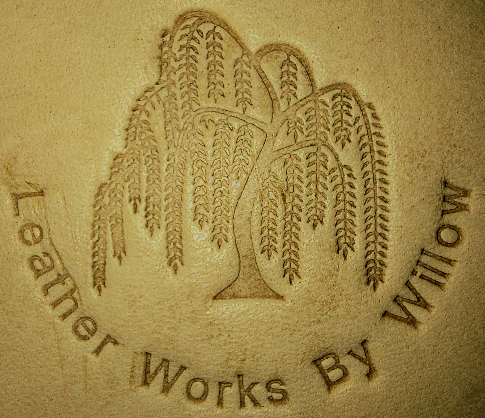
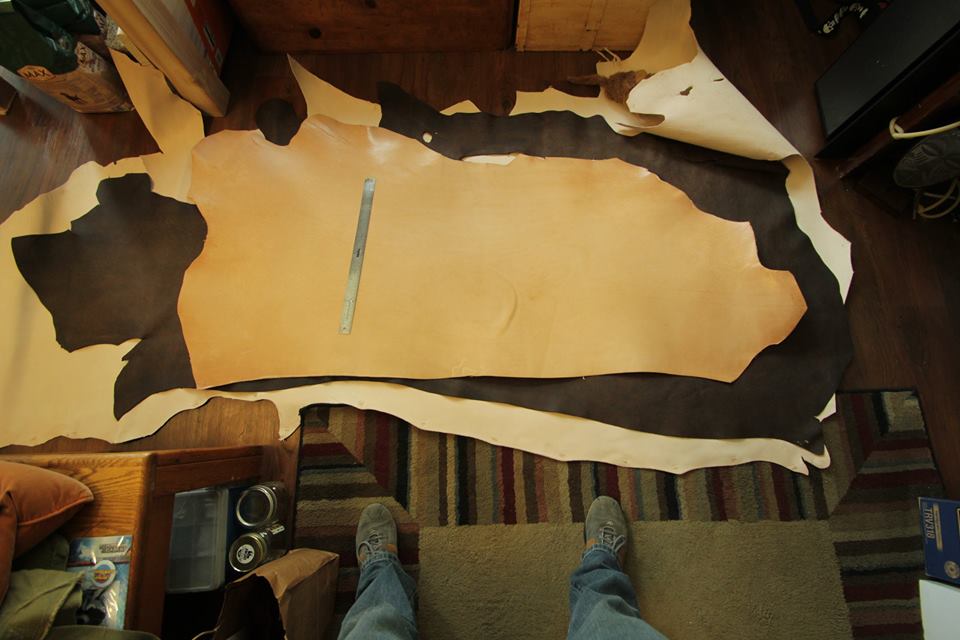
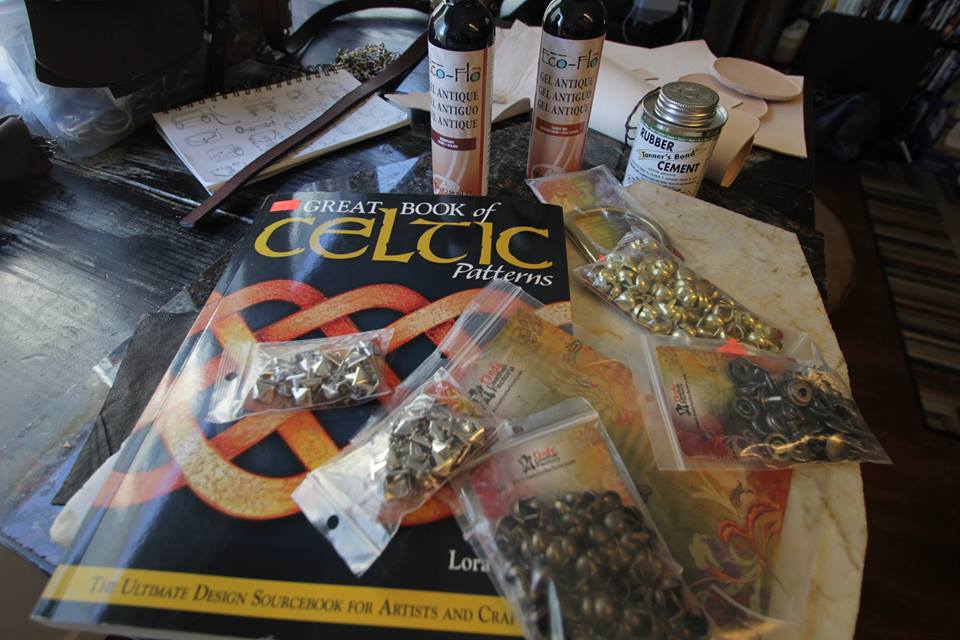
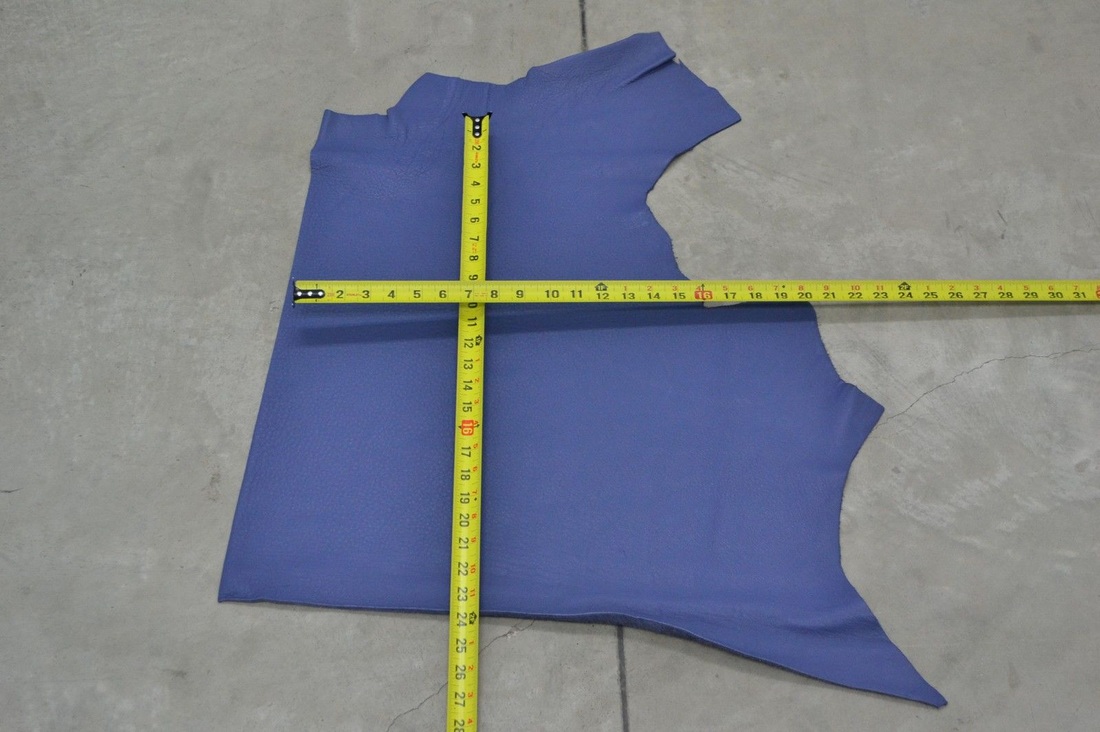
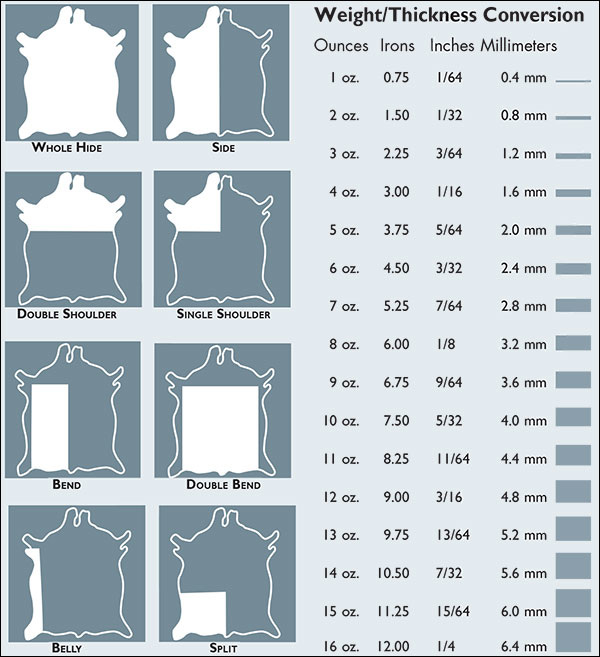
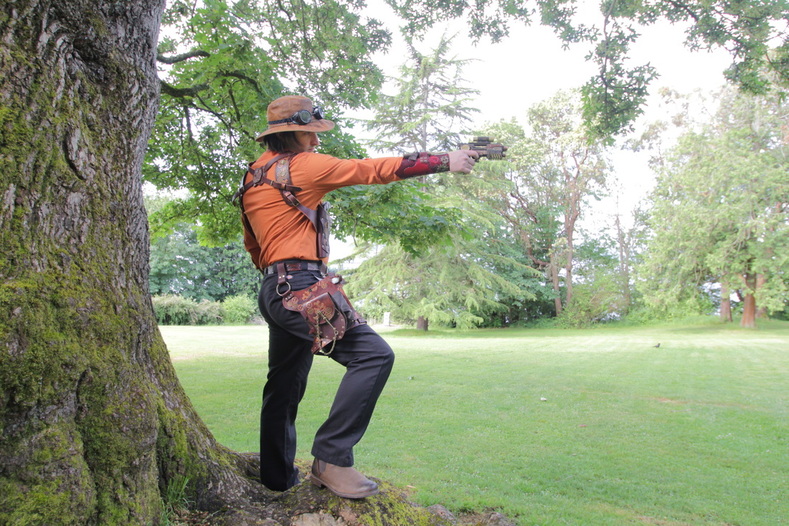
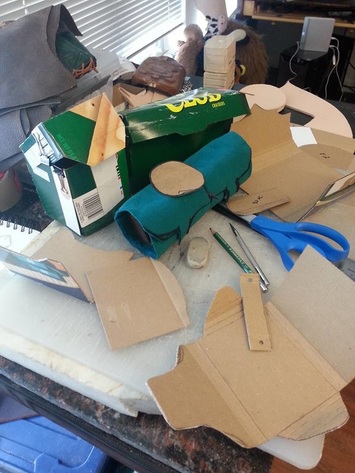
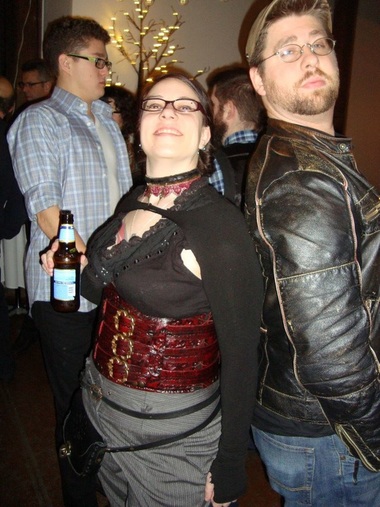
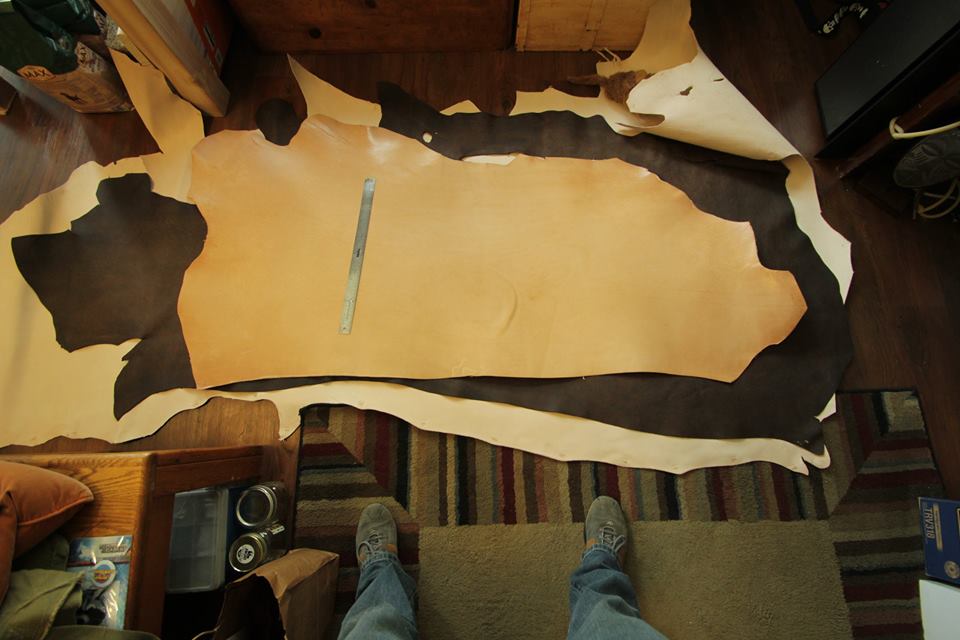
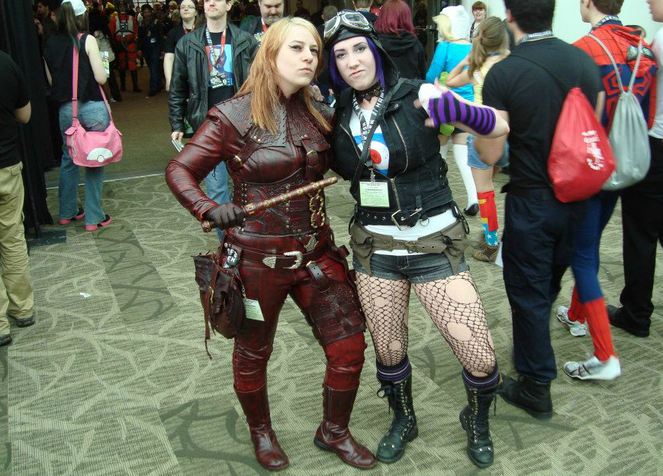
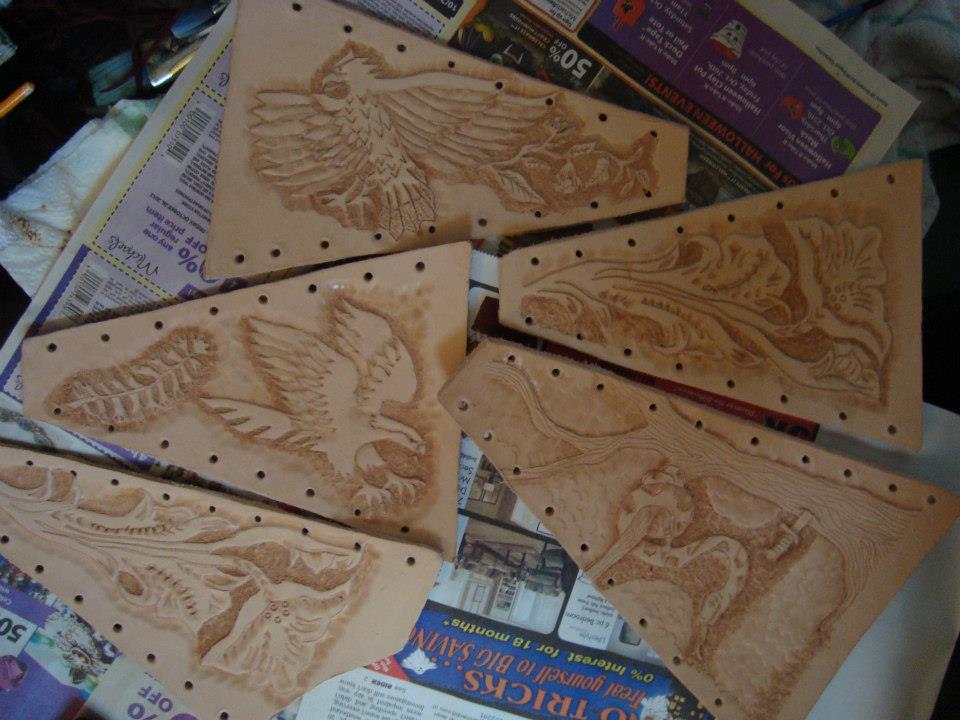
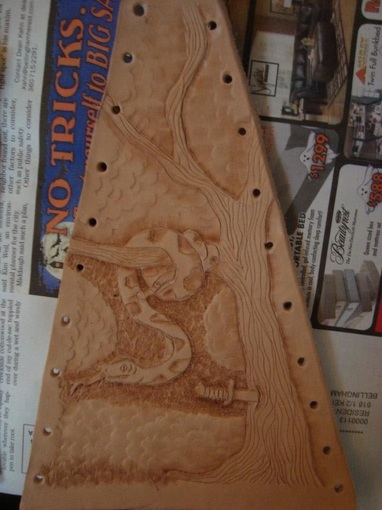
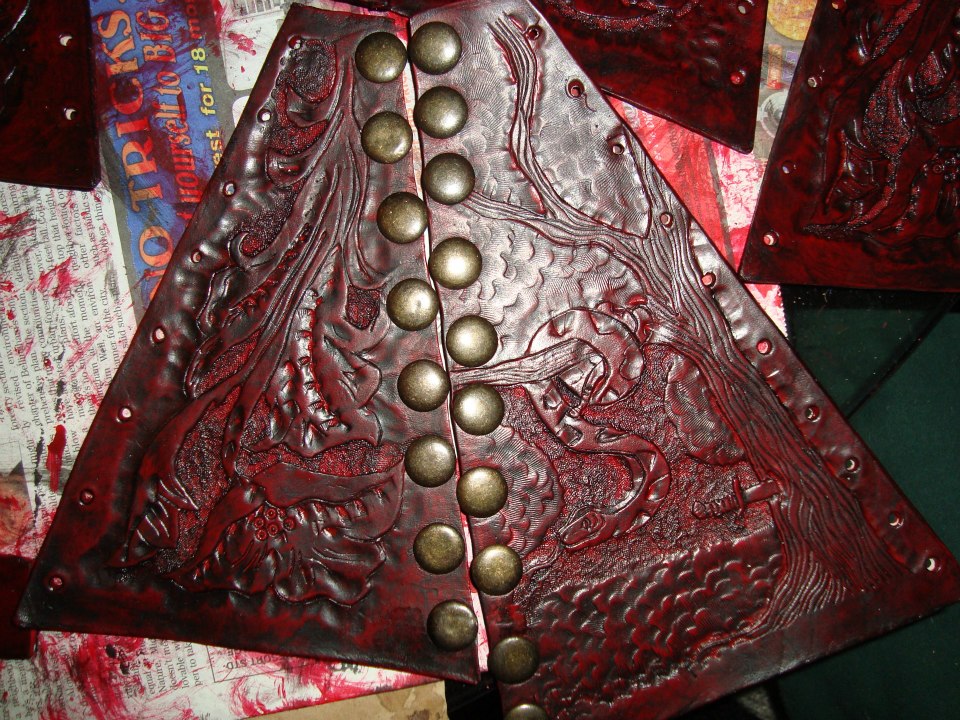
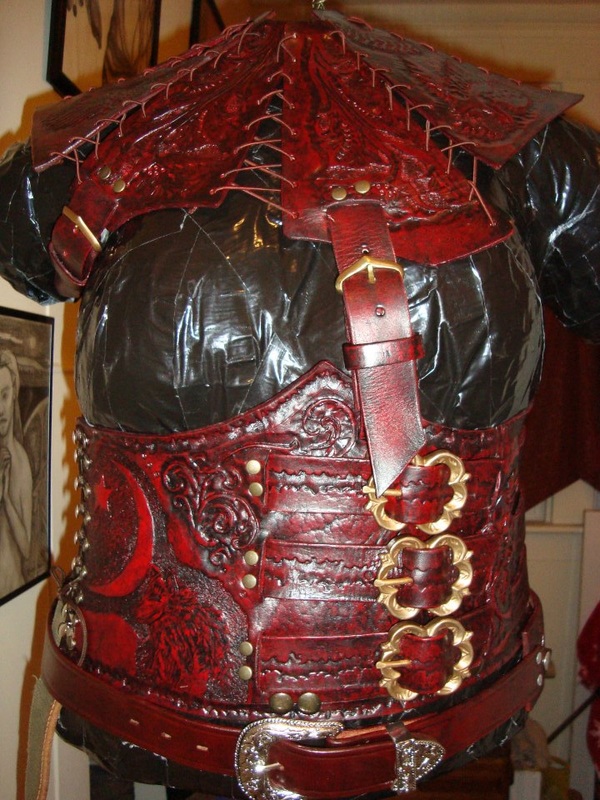
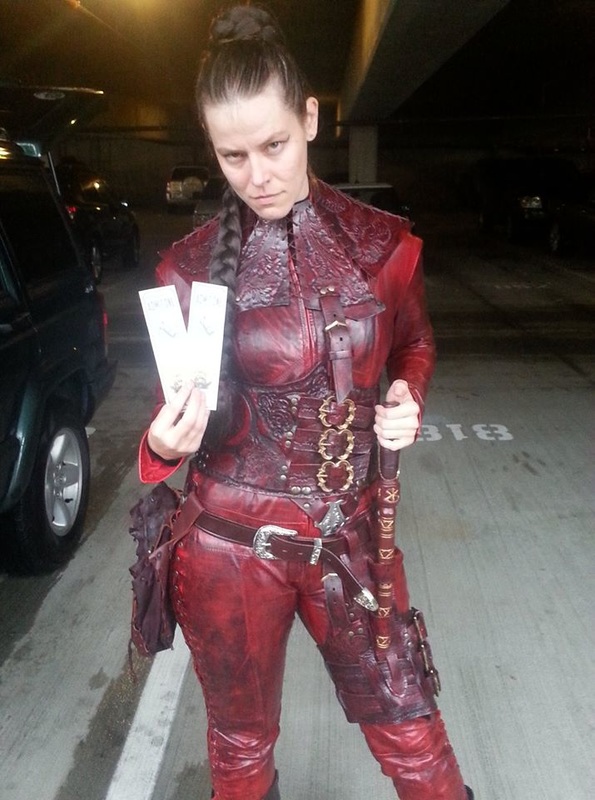
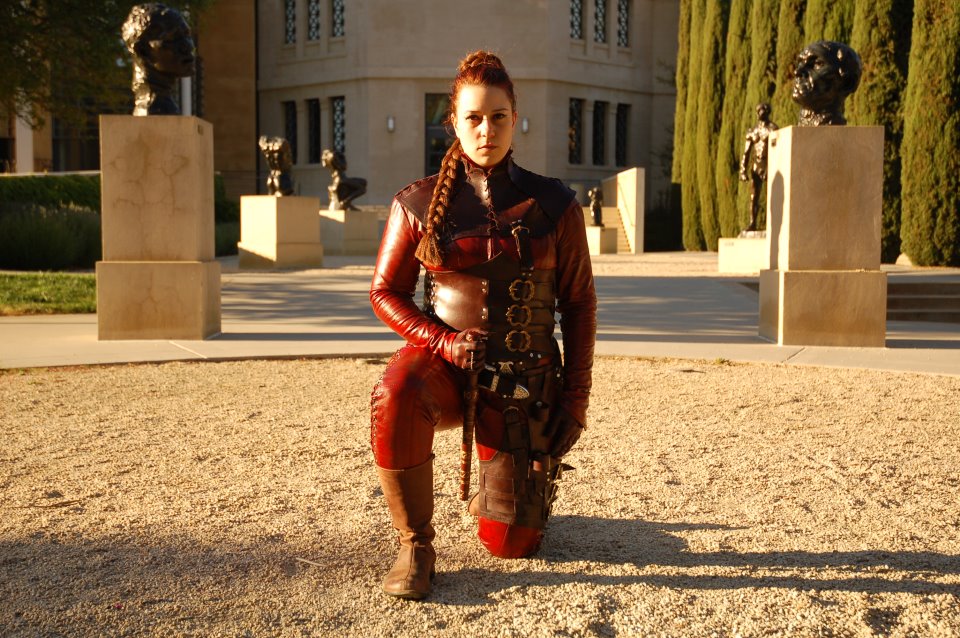
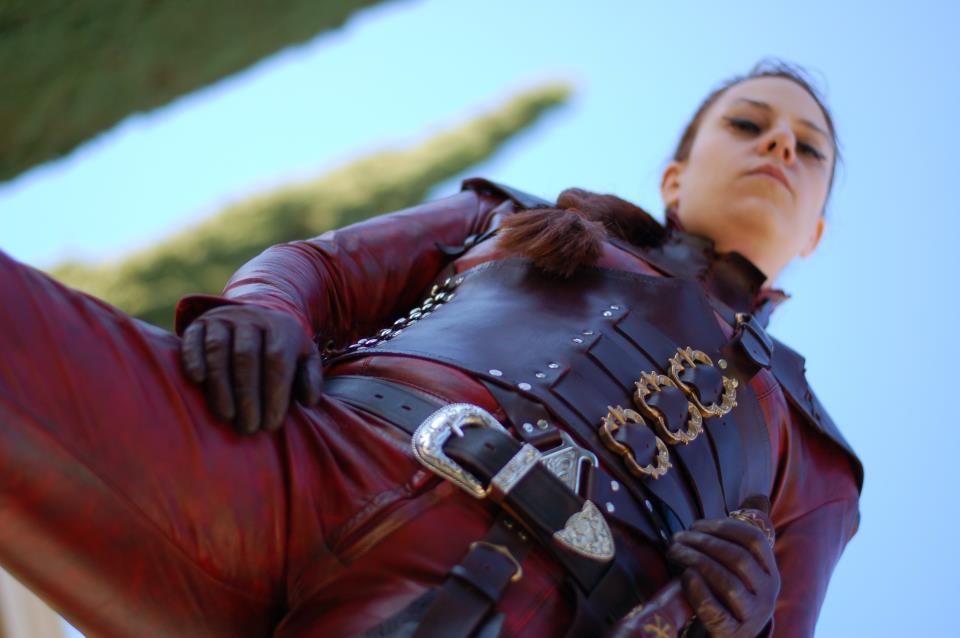
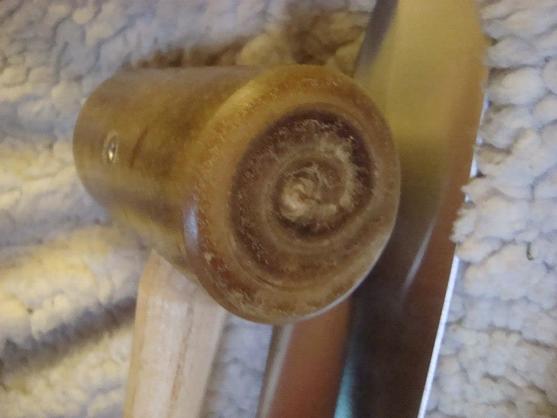
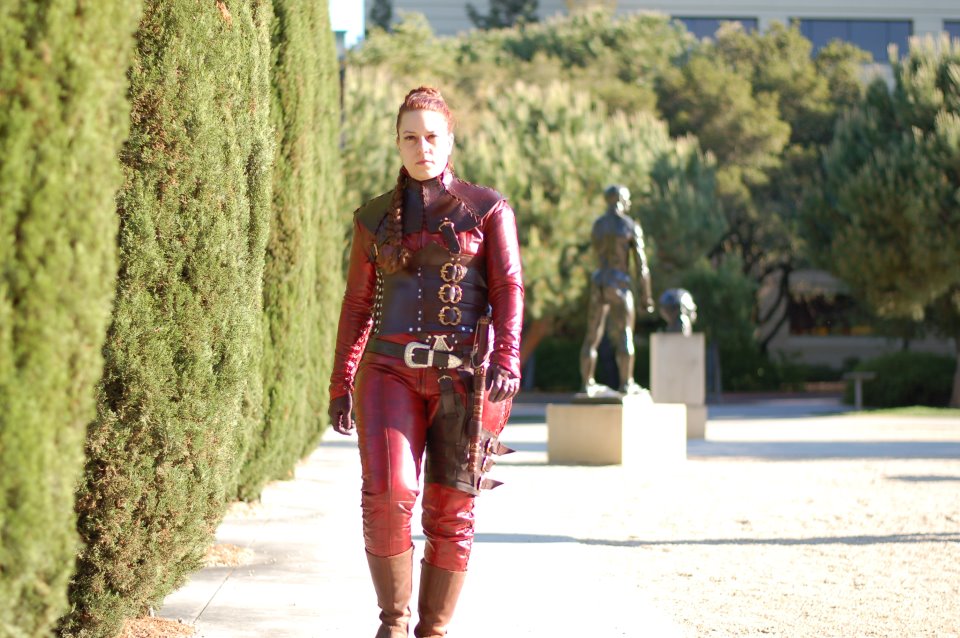
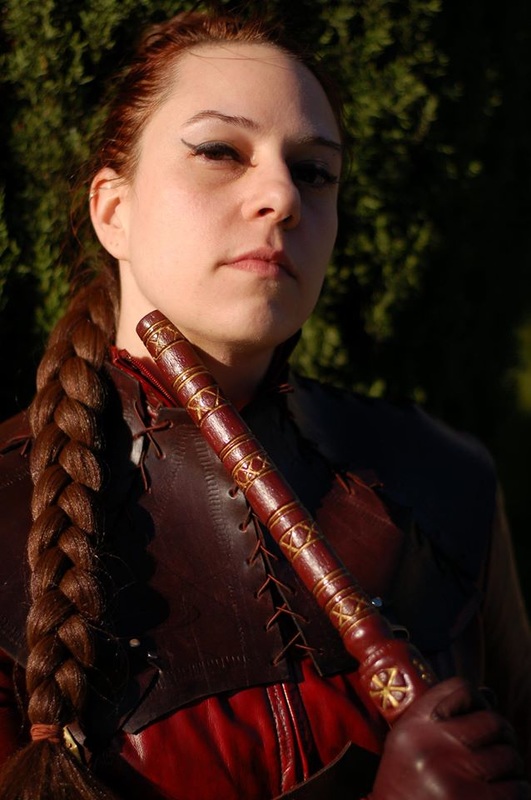
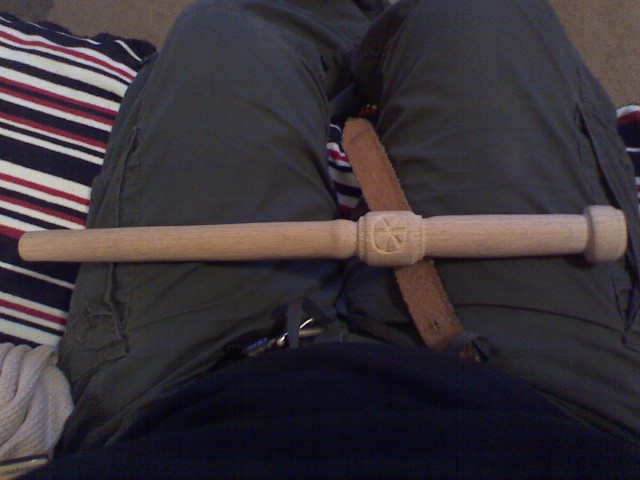
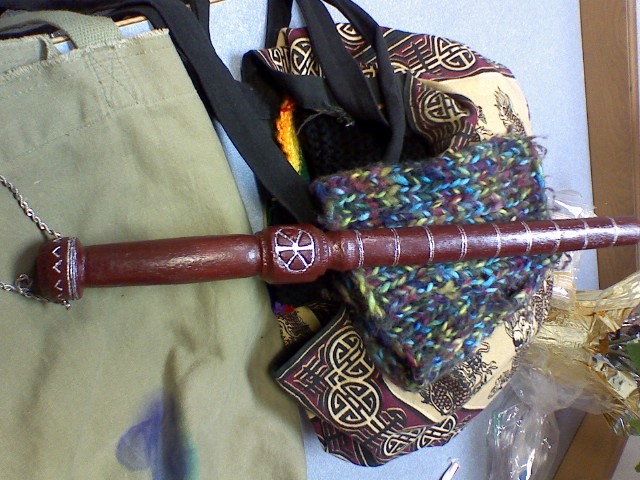
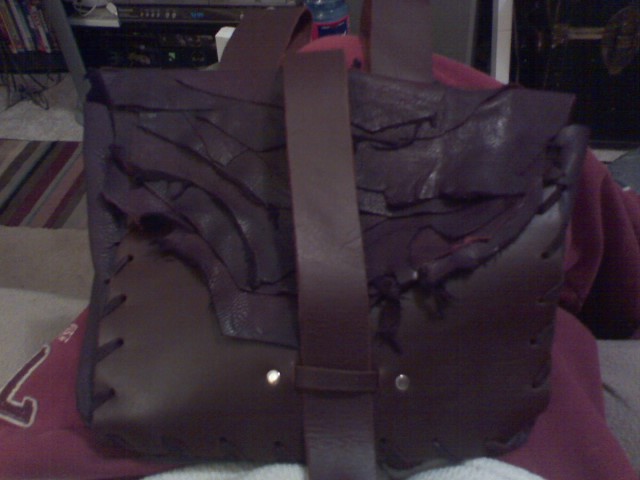
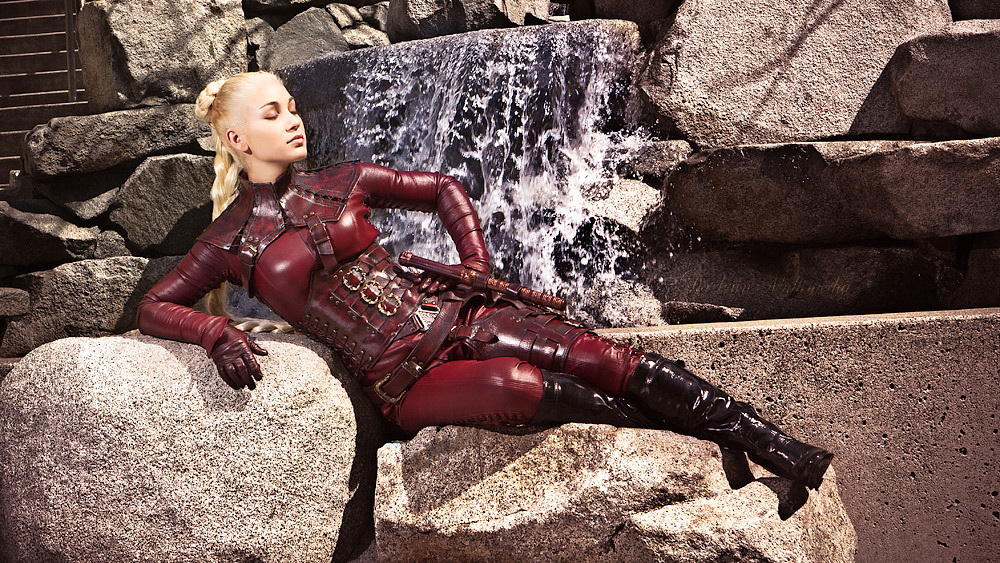
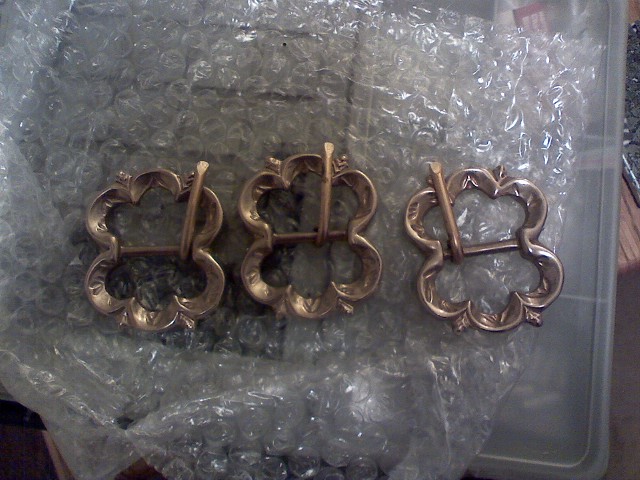
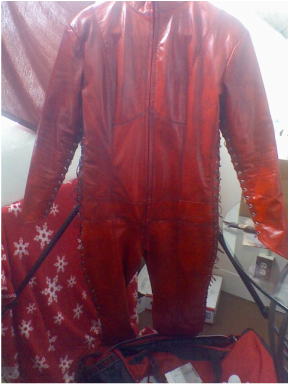
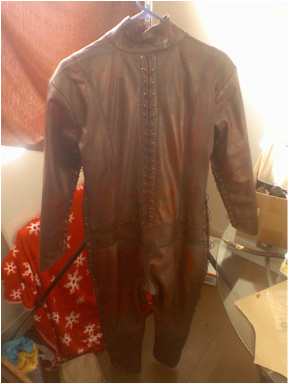
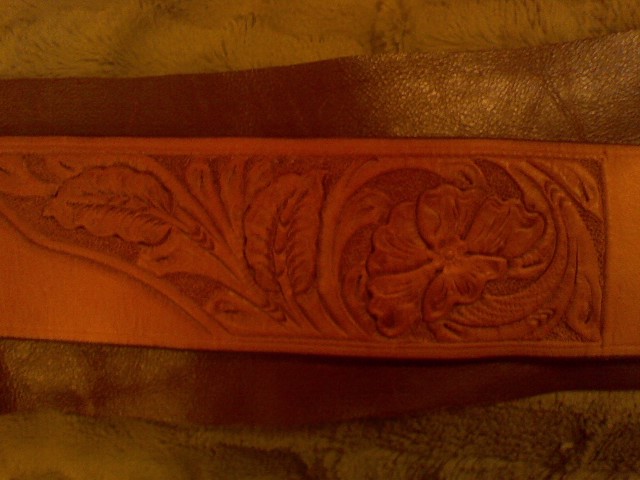
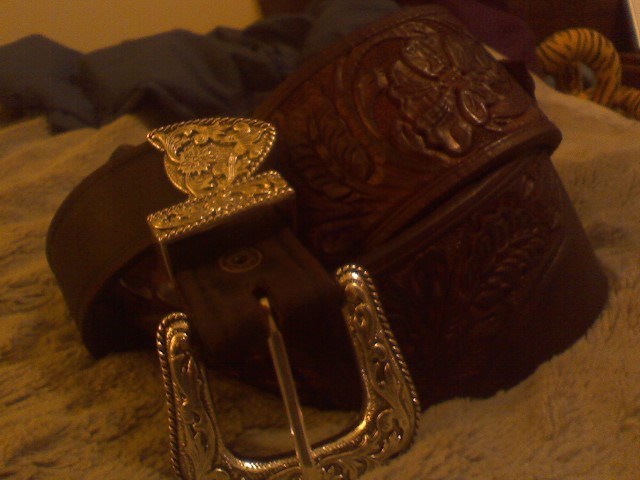
 RSS Feed
RSS Feed
